SWITZERLAND

JESUIT CHURCH
|
ALL ABOUT SWITZERLAND |
 |
LUCERNE/LUZERN JESUIT CHURCH |
|||||
|
Swiss Cities Basel Bern Geneva Lausanne Lucerne · Hotels · History · Downtown Tour · Chapel Bridge · Spreuer Bridge · Musegg Wall · Lion Monument · Jesuit Church · Hof Church · Franciscan Church · Paulus Church · Bourbaki Panorama · Wooden Houses · Pius Church St. Gallen Winterthur Zurich Alpine Resorts Bernese Oberland Zermatt/Matterhorn Swiss Tour Chillon Castle Rhine Falls |
Lucerne
|
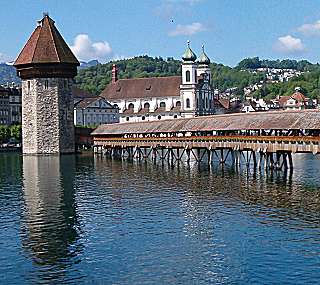 |
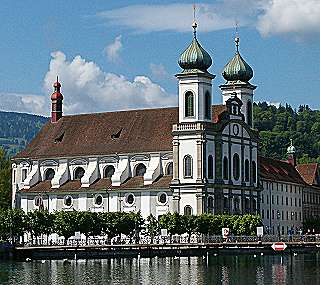 |
The Jesuit order, founded by Ignatius of Loyola in 1534, served as papal elite troops in the spiritual fight against protestantism. The Swiss Reformation, conducted by reformators Zwingli in Zurich and Calvin in Geneva divided Switzerland and left Lucerne as the only major Swiss city to stay with the traditional catholic beliefs. The program of the catholic Counter Reformation, as laid out on the Council of Trent (1545-1563), did not really take up any theological arguments of the reformators, but rather concentrated on organizational reforms, especially on better education.
In this context, the Jesuits were called in to Lucerne by the city council in 1573 to establish a college. Ludwig Pfyffer, mayor of Lucerne, offered annual financial support to the Jesuits out of his private funds. The Jesuit College of Lucerne was established in 1577 in Ritter Palace, a building originally erected in 1557 as a residence for mayor Lux Ritter (today Ritter Palace serves as the seat of the cantonal administration). The college grew fast and had 300 to 400 students betwenn 1650 and 1700.
First ideas to construct a proper church next to the Jesuit college go back to the 1630's, but only in December 1666 the cornerstone of Jesuit Church was laid, and the construction began in 1667. By 1673 the shell of the church and the main façade were completed. The church was consecrated in 1677, though the interior was not yet really finished. Several side altars were still missing and even the high altar was only erected four years later, due to financial problems. The onion topped towers were not completed until 1893. Lucerne's Jesuit Church is the first large baroque church in Switzerland.
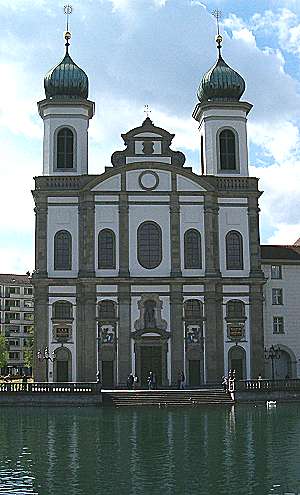 |
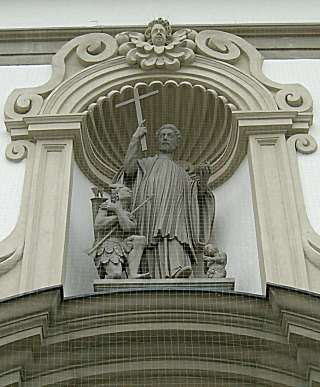 Jesuit missionary Saint Francis Xavier patron of Lucerne's Jesuit Church |
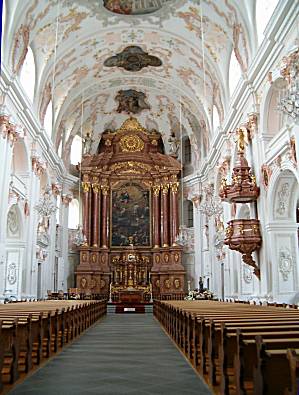 Nave and high altar (marble stucco) |
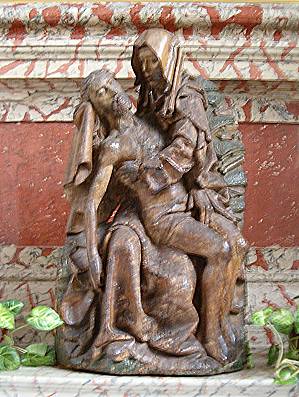 Pietà |
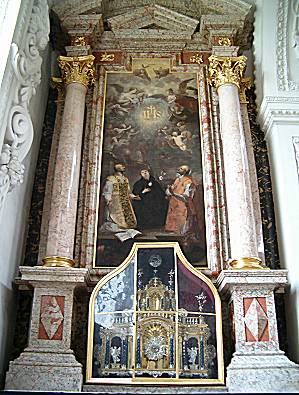 Ignatius chapel |
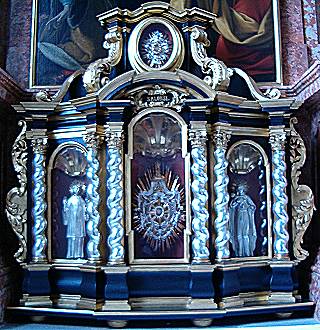 St. Aloysius reliquary (chased silver) The prominent presentation of relics to spite the protestant iconoclasts is characteristic of the spirit of the catholic Counter Reformation. |
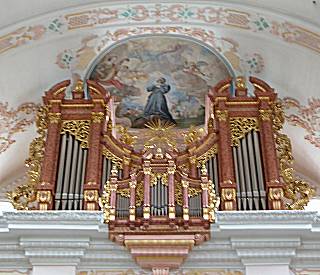 Main organ, built by Swiss organ manufacturers Metzler in 1980-1982. The case was restored using parts from an older organ dating back to the 18th century. Jesuit Church is frequently used for organ recitals. |
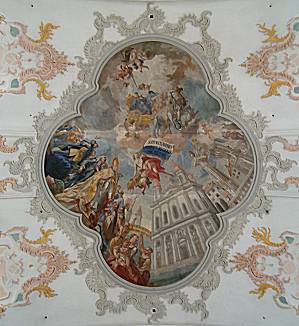 Glory of Saint Francis Xavier (painting on ceiling) |

Short quotations allowed but with precise declaration of origin (Link).
Reproduction of substantial parts and pictures in printed or electronic form
only with explicit written consent by the editor.
| Disclaimer | Privacy Policy | www.all-about-switzerland.info © 2005-2010 All Rights Reserved | Editor | ||